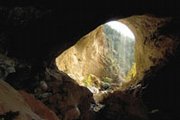The following letter was sent to Arizona Governor Jan Brewer by Arizona Heritage Alliance Board President, Elizabeth Woodin:
March 26, 2009
The Honorable Jan Brewer
Governor, State of Arizona
1700 W. Washington St.
Phoenix, AZ 85007
Dear Governor Brewer:
On behalf of the Board of Directors of the Arizona Heritage Alliance, I wish to commend you for signing the Executive Order of March 12, 2009 reestablishing the Governor’s Sustainable State Parks Task Force. You have charged this group with a daunting, but necessary, task. We can hope that they, with solid public input, develop and recommend some very innovative and workable solutions.
By way of background, the Alliance is comprised of hundreds of individuals, non-profit organizations, government entities, tribes, and businesses that work to educate the public and Alliance members about the Arizona Heritage Fund as well as protect the Fund’s integrity and effectiveness.
As you are aware, the Arizona Heritage Fund was voter-initiated in 1988 and approved by two-thirds of the electorate in 1990. Backed with Arizona Lottery proceeds, the Fund is a nationally acclaimed “quality of life” and economic development tool that supports and protects our state’s parks, open space, wildlife habitat, environmental education, trails, historic and cultural sites, and public access to public land. Since 1990, more than $338.5 million of Heritage Funds have been invested in preserving and enhancing an incredible array of natural, cultural, and recreational resources in every Arizona county and legislative district. The economic multiplier factor brings that number up close to $1 billion.
Unfortunately, at a time of unprecedented financial shortfall, our state government approved this January:
- Huge “sweeps” of numerous funds, including nearly $6 million in Arizona State Parks’ Heritage Funds.
- A reallocation of $3 million of Heritage Funds to the Arizona State Lands Department for its Fire Suppression Fund, money that department officials said at a recent JLBC hearing they do not need.
- Cancellation or suspension of $11.7 million worth of Heritage Fund projects in 25 Arizona communities already contracted for and underway ~ more than shovel-ready!
Regarding this last bullet point, dozens of private citizens, non-profit organizations, and local government and tribal officials have contacted the Alliance and expressed absolute frustration with the desperate and dismaying action taken by Arizona State Parks. Many are “on the hook” with signed agreements they cannot keep without the funds, as well as half-restored and roofless historic properties, half-built park structures that are now an eyesore and possible safety hazard, and fragile archaeological artifacts that now are not in compliance with federal standards. In addition, these projects help to bring in construction jobs and tourism dollars. The multiplier effect of the economic impact of these projects to communities, urban and rural, is significant.
Although Arizona State Parks was backed into an untenable situation by the State Legislature’s removal of its funding, both General Fund and Heritage, its action to remove Heritage Fund monies from grantees is unprofessional and shameful. This is no way to approach the celebration of Arizona’s Centennial in 2012.
These individuals, non-profits, municipalities, and tribes who followed the rules, dotted their “I’s” and crossed their “T’s,” were awarded and accepted grants in good faith from Arizona State Parks — only to have the money stripped away mid-stream. Here are just a few examples:
- Renovations to the “White Dove of the Desert,” San Xavier del Bac Mission in Tucson
- Improvements to the Ed Hooper Rodeo Grounds in Casa Grande
- Over $600,000 of upgrades to Bullhead City’s Rotary Soccer Field
- Stabilization of the historic Sullivan Building in Jerome
- Roof repairs to the historic structure now home to the Great Arizona Puppet Theater in Phoenix
And there are many other examples as outlined in the attached list compiled by Arizona State Parks staff.
Recommendations to reconcile $11.7 million in rescinded Arizona Heritage Fund grants:
- Several of your colleagues in the State Legislature agree that the $3 million in Fire Suppression Funds should be returned, and we are working with them to make that happen. When returned to Arizona State Parks, the funds should be directed to complete the “suspended” grant projects.
- While there will not be an Arizona Heritage Fund grant cycle in 2009, there will be a $10 million allotment from the Arizona Lottery to Arizona State Parks. That $10 million can also be directed to the “suspended” grant projects.
What is not a long-term solution to replenish “swept” Arizona Heritage Funds and Arizona State Park operating funds is HB2088. It borrows from another voter-initiated, passed, and protected fund in ways that Arizona voters did not approve. As the Arizona Heritage Fund is similar in concept, the Arizona Heritage Alliance cannot support HB2088. In addition to “robbing Peter to pay Paul,” many consider the actions recommended in HB2088 to be unconstitutional which could bring about an expensive, lengthy, and divisive legal challenge.
We would welcome the opportunity to sit down with you and members of your staff to discuss these and other options available. We can also offer you a tour of several “swept” Heritage Fund projects, which will make you feel even more proud to be an Arizonan.
Thank you for your consideration in this matter and for your commitment to serve Arizona. If you have any questions, please do not hesitate to contact me.
Sincerely yours,
Elizabeth T. Woodin
President



You must be logged in to post a comment.